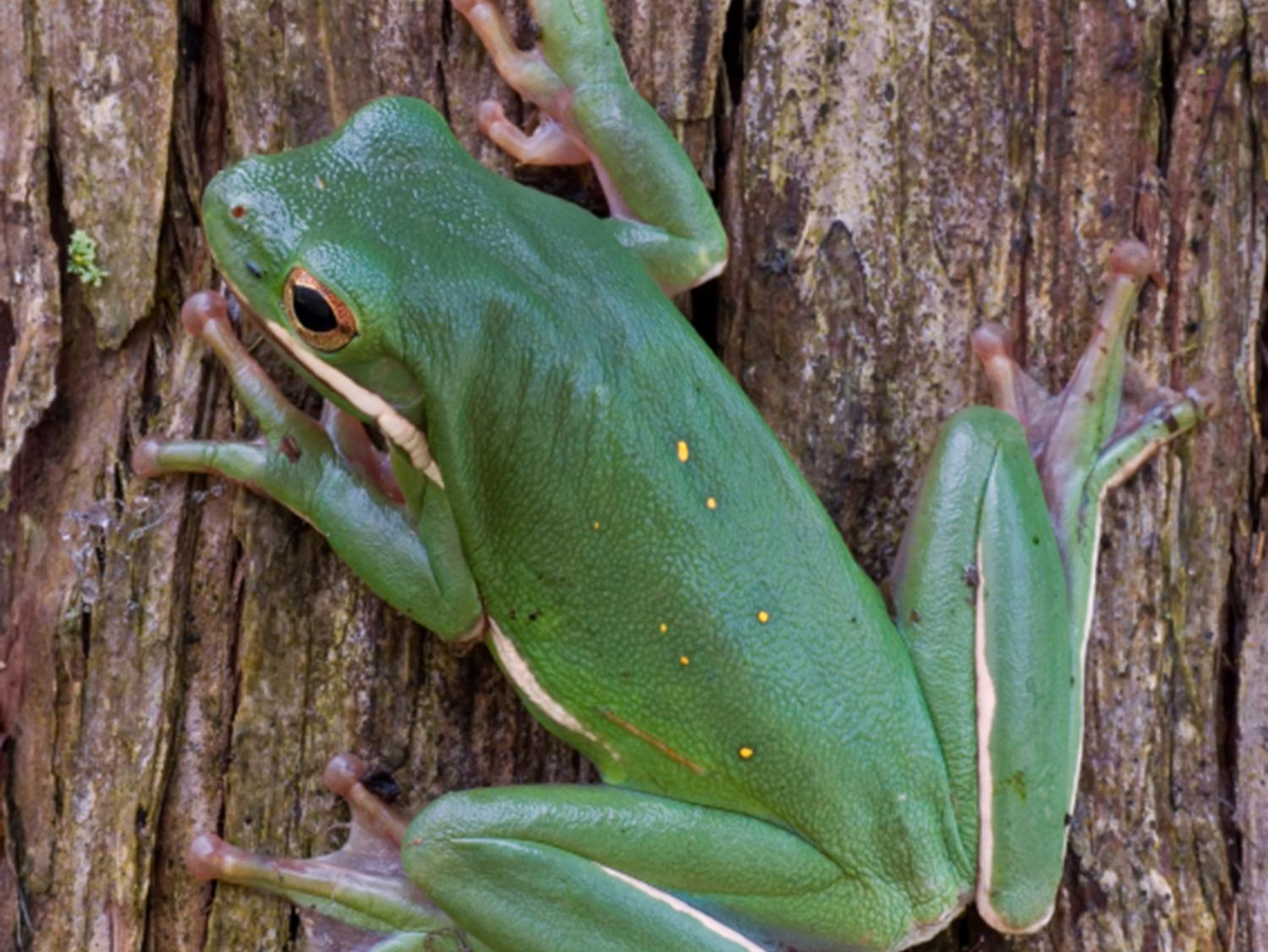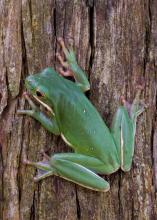Information Possibly Outdated
The information presented on this page was originally released on April 18, 2019. It may not be outdated, but please search our site for more current information. If you plan to quote or reference this information in a publication, please check with the Extension specialist or author before proceeding.
Spring rains trigger vocal, beneficial frogs
STARKVILLE, Miss. -- Kermit the Frog hopped into stardom from the Mississippi Delta town of Leland. His real-world “relatives” are waking with spring rains and warmer weather, but there are not as many amphibians as there were when Kermit was a tadpole.
Frogs, toads and salamanders are fascinating members of our natural world. These amphibians start their lives in water, and most will later change (through metamorphosis) into land-based adults. They eat pest insects, which benefits agriculture and controls diseases such as malaria. They are food to bass and other popular sportfish.
Many Southerners know that frog legs make for good eating. But fewer know that many amphibians can regrow limbs lost through accident or injury. Because of this special ability, medical scientists study these animals to learn about tissue regeneration. Amphibian skin is even used in some human medications.
Sadly, about 30% of known amphibian species are now threatened with extinction. It would be hard to imagine a spring night without the soft songs of frogs and toads. Their loss would also mean the loss of potential medical treatments and natural pest control.
Loss of habitat is a key contributing factor to amphibian population declines. Wetlands are homes to amphibians. These habitats are often altered or destroyed in urban or agricultural development.
Amphibians are also dying around the globe from a rapidly spreading disease caused by a fungus. At this time, no cure for this disease has been found.
Amphibian declines should also serve as a warning to people. These animals -- like us -- have thin skin. They are easily harmed by chemicals and pollutants in the environment. If amphibians are being harmed by contaminants, people are also likely being impacted.
Biologists around the world are working hard to prevent the possible extinction of amphibians. Zoos and aquariums are breeding endangered species in captivity with the goal of reestablishing them in the wild. Field biologists are studying wild populations to learn more about their lives. Scientists are searching for a cure to the fungal disease. Conservationists are working to save remaining wetlands from contamination or destruction.
Citizens can get involved in amphibian conservation, too. FrogWatch USA is a citizen science program in which people can learn about community wetlands and contribute data on local amphibians to a national dataset. The organization “iNaturalist” allows people to participate with scientists in mapping locations of amphibians. You can also protect your local water bodies by minimizing use of lawn chemicals and eliminating spills of oil, gasoline and other toxic substances that can end up in the water.
Every little bit will help Kermit’s buddies continue to fill Mississippi spring nights with joyful songs.

Editor’s Note: Extension Outdoors is a column authored by several different experts in the Mississippi State University Extension Service.







